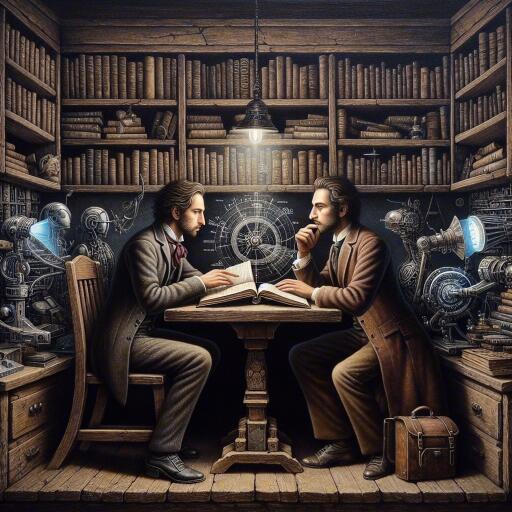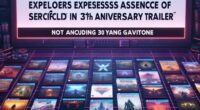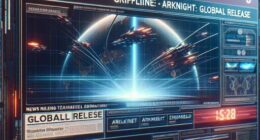A Conversation With Rod Dreher on Living in Wonder Part 2: Daemon Ex Machina
In today’s digital age, we carry the world in our pockets—a small screen that not only captivates our attention but also tracks our every move. While artificial intelligence is heralded as the wave of the future, there’s a lingering question: could it potentially overwhelm humanity? As debates rage about the intrusion of AI in our lives, a deeper question emerges about the spiritual dimensions of our technological advancements. Are the same forces we criticize unknowingly residing in our pockets or on our desktops?
While recent discussions about UFOs in government circles have often been ridiculed, a surprising undercurrent reveals that many in high places are taking such phenomena seriously. This raises a profound question: who is attempting to supplant the divine in our lives?
Continuing a fascinating dialogue with Rod Dreher about his recent book, Living in Wonder: Finding Mystery and Meaning in a Secular Age, we delve into the blurred lines between reality and what lies beyond, a veil thinner than we might acknowledge.
Unveiling Hidden Beliefs
Though many religious institutions, except perhaps the Roman Catholic Church, might dismiss the occult and UFO phenomena, Dreher points out that influential groups, especially in Silicon Valley, often regard them with sincere belief. Such revelations were startling during his research for Living in Wonder. Despite a lifetime of Christian faith enriched by mysticism, Dreher admits he never gave UFOs much thought—until a conversation with a Vatican journalist challenged that perspective. The journalist urged Dreher to investigate deeper spiritual dimensions within the UFO phenomenon.
His exploration led him to Diana Pasulka’s book American Cosmic, which opened his eyes to how seriously some prominent people—from government insiders to Silicon Valley visionaries—take these matters. Interestingly, these individuals often perceive UFOs not as extraterrestrial but as entities existing in other dimensions. While some might equate these entities with demons, believing they are instead higher intelligences seeking interaction with humanity, others see them differently.
The Interplay of AI and Mysticism
The intersection of AI and occult beliefs emerges as a curious blend, reminiscent of high-tech spiritualism. At a conference in London, Dreher encountered Orthodox Christians discussing how AI is sometimes used like a digital Ouija board to communicate with unknown entities. A venture capitalist from California confided that this practice was a common pursuit among some of his Silicon Valley peers. It’s a profound shift, and Dreher believes this demands serious attention—as many laugh or shy away in fear.
C.S. Lewis once portrayed evil as deceptively appearing as an angel of enlightenment. This analogy draws a parallel to modern perceptions of AI and UFOs. Would humanity more readily accept profound change from visitors promising enlightenment and prosperity instead of fearing unknown threats?
The Alluring Facade of Technology
Jacques Vallée, a notable UFO researcher depicted as a character in Close Encounters of the Third Kind, presents a controversial theory. Vallée, who built his career in Silicon Valley, posits that UFOs might be manifestations of deceptive entities that have interacted with humanity for millennia—now adopting forms that fit our technologically saturated imaginations.
Pasulka recounts visiting Vallée’s San Francisco home, surprised by his library of books on angels and demons. Despite his non-Christian background, Vallée expressed interest in these topics as part of his broader research. He suggests that a malevolent intelligence guides these phenomena, an unsettling revelation for many.
The Divine and Digital Convergence
In our pursuit of transcendence, technology has become a new deity, replacing traditional spiritual forms. AI stands at the forefront, posing as an all-knowing guide. As reliance on artificial intelligence grows, the line between technological advice and divine edict blurs—a thought-provoking reality unfolding before us.
The blending of AI into daily life evokes eerie examples, from AI pairing with children as lifelong advisors to the unsettling rise of AI entities being likened to guardian angels. These developments are becoming pervasive in a world where many believers remain oblivious to the implications.
In Lucerne, Switzerland, a chapel has introduced an AI Jesus, offering advice and comfort through a screen. Reactions vary, with some viewing it as a mere novelty, while others walk away with perceived spiritual enlightenment—an embodiment of algorithm-driven faith.
The Human Tendency Towards Idolatry
Our history is rich with instances of turning away from the divine for idols, and AI represents the latest in a long line of golden calves. There’s a danger in embracing the superficial allure of technology without recognizing its potential to deceive. When arguing with a proponent of virtual reality churches, Dreher expressed skepticism, underscoring a belief that true worship cannot be reduced to mere data exchange. This disembodiment risks further disconnecting faith from its tangible, meaningful roots.
Tales of AI glitches manifesting as sinister figures paint a disturbing picture of the unseen forces technology may unleash. Such instances, like the haunting image of “Loab” encountered through an AI image generator, stand as modern parables warning of unseen dangers.
Even stories of consecrating AI to deities speak to the blurred lines between spiritual and digital worlds. An example cited is the attempt to dedicate an AI entity to Thoth, the Egyptian God of the Dead—a fusion of ancient belief systems with modern tools. Exorcists note a peculiar attraction of demons to electronic devices, an observation that echoes through experiences of those tormented by unexplained phenomena tied to technology.
Reflecting on personal anecdotes, the veil between our world and the next can, at times, feel tenuously thin. It is a reminder of the pervasive mystery that defies easy explanation and challenges us to consider the profound implications of our digital age.









